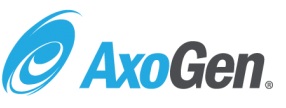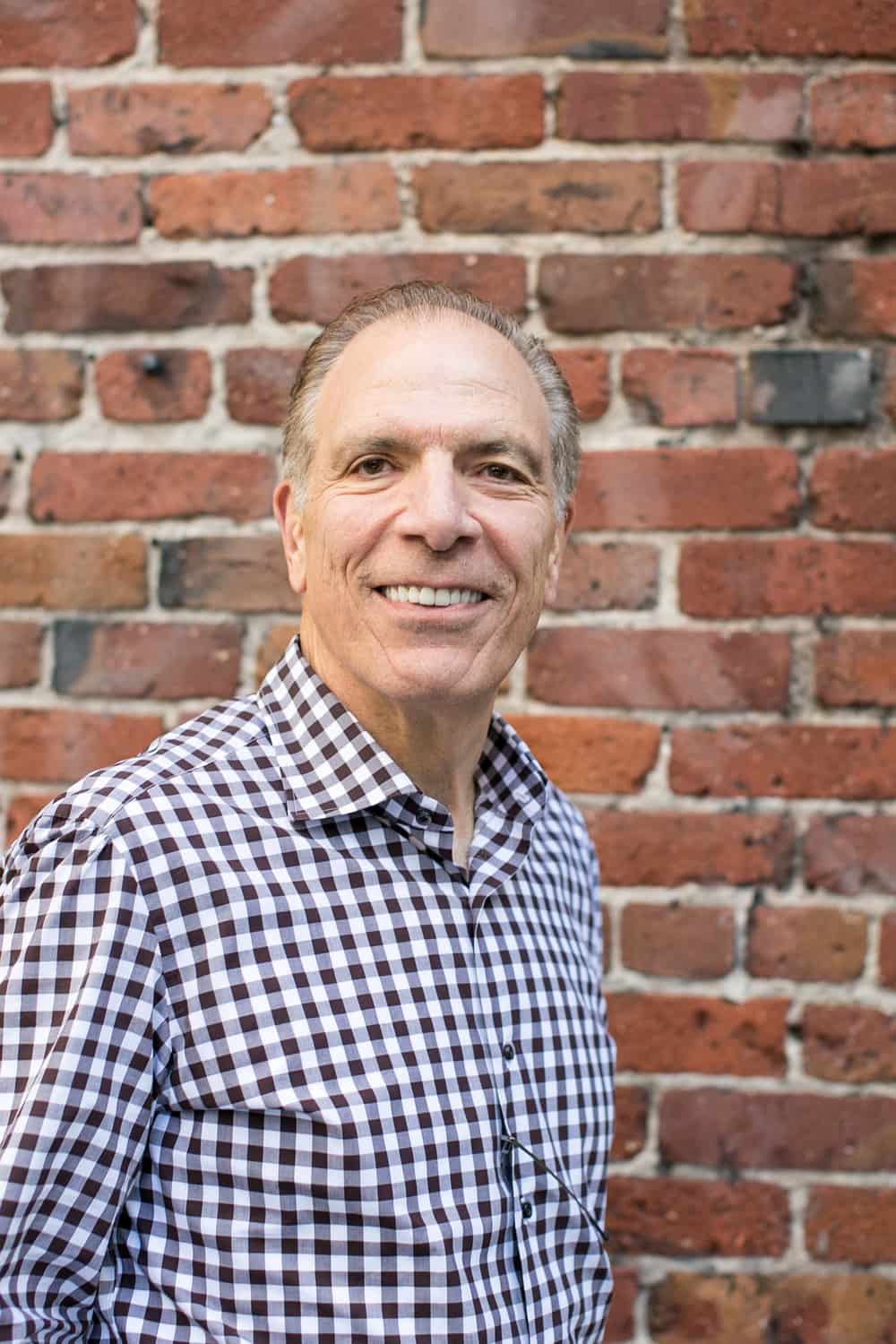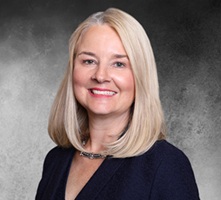ARTICLE SUMMARY:
DeNovo Ventures’ Managing Director Joe Mandato speaks with Karen Zaderej, head of peripheral nerve specialist AxoGen.
 Introduction
Introduction
Karen Zaderej is unique among people I’ve talked with in this governance series in that she inherited her board and it is a public company board. She is chairman, CEO, and president of AxoGen Inc., and also sits on the board of Viveve, a public company itself. AxoGen is a high-growth company focused in the area of peripheral nerve repair, working with surgeons to help them resolve issues for patients who have injured or damaged nerves. AxoGen’s product applications include oral maxillofacial surgery as well as breast reconstruction neurotization and trauma surgery.
I served on the AxoGen board for 10 years and found Karen to be outstanding at leading board engagement.

Joe: This is exciting–I'm so happy you agreed to talk with me for We’re Just Talking. AxoGen has been highly impactful in medicine and is now financially successful. Congratulations! You’re very busy, and so let’s dive in. How would you describe your board style? What do you feel you do well as a leader and member of a board?
Karen: Our style is collegial and purposeful. The board is very focused on our vision and direction and is not easily distracted. We have different perspectives and are good at airing and discussing those without animosity; it's really all of us trying to do the best thing possible for the company. We listen to and respect the different perspectives because we know it’s important to air conflict as it arises.
Joe: I witnessed that first-hand with your board. You go out of your way to make sure that's the case. AxoGen also is not a Silicon Valley company and I think that is an advantage. Do you agree?
Karen: I've never been part of a Silicon Valley company, so I'm not sure I know enough to answer.
Joe: Some founder CEOs in the Silicon Valley culture lose sight of the cause and can be pretty ego-driven. I never saw that with you or the AxoGen board, and I think that's a direct reflection of how you run the board.
Karen: I view this board as my advisory group, and so I go out of my way to make sure that I understand all perspectives. We don’t have the feistiness of people who feel their voice is not heard because I think we hear their voices. On the other hand, we try to select people who recognize that a decision needs to be made and ultimately we're going to make a decision that's right for the organization, which might not align with their opinion. As the leader of a public company, it cannot and should not be about me.
Joe: What do you think you should do differently? What could you do more effectively with your board?
Karen: We need to recognize that as the company changes, the board needs to change. When we first went from being a venture-backed company to a public company, I interviewed CEOs who had made that transition ahead of me. I wanted to learn from them. Most of them said something like, “The people with you today will not be able to make the full journey with you because the organization and your needs will change.” That applies to AxoGen’s leadership and its board. Our challenges change as we grow.
When we were a tiny, venture-backed company during a recession, our challenges were “How do we keep this company alive?” That's one set of governance concerns and skill sets. Today, our challenges as a board are very different. We have financial capabilities, but we need to make sure that we're scaling effectively and staying, organizationally, directed and purposeful, that we don't get unduly distracted. As a board, we need more operational thinking about how we scale this business.
We cannot go too far in one direction or another. While today we're thinking operationally about how to scale the business, as a public company we need to be thinking about broader governance issues and risk factors and staying ahead of things. Operationally, that entails asking Where we are today? and What are we going to do tomorrow? We also need to be looking ahead a year and longer. One of the risk factors in an operationally strong group is that we could get short sighted. We have to make sure that the board considers longer-term opportunities and risks.
Joe: With the diversions of running a public company, how can you as CEO best impact your board and company?
Karen: It’s most important to hire good talent around me, because otherwise being a public company could take up all of my time. In the interviews I did with CEOs of public companies, I asked, “What will change in my life?” One thing that surprised me was that the CEOs said, “The public company activities and the investor activities will be at least 50% of your time.” I thought, frankly, that's good input but I'm smart and I’m somewhat optimistic; I'm going to make it 25% of my time. Not so lucky–it was easily 50% of my time.
It really was a substantial investment of my own time, which meant I had to trust the management team to execute and grow the company with the help and support of the board. We’ve also hired talented leaders who worked in the investment community to manage corporate development.
I’m now down to spending 25-30% of my time on the business of being a public company, but it took me six-to-seven years to get there.
Joe: Thinking about that leverage you gained by surrounding yourself with great people, do board members have a role in culture and leadership? What role should and does your board play?
Karen: Our board represents our shareholders and thinks about our vision and long-range goals for the organization. It is strategic, but it also thinks about the shortest implementation plan and prioritization and about us being accountable for the ideas and initiatives we want to implement. For instance, we brought in Amy Wendell as lead director, which was a very direct attempt to add skill sets we wanted and to bring different perspectives into the group.
I also leverage the individual skill sets of our board directors who help coach and interact with AxoGen leaders. One board member has a very strong marketing operations background, and he interacts directly with the marketing team. Another of our board members is strong in social media and direct-to-consumer medical education, an initiative that we've recently started with our breast reconstruction neurotization application. This board member has connected us with vendors and other resources that can help us. As a group, we try to stay focused on big things but also leverage each board member’s individual strengths to help us do more and extend our reach.
Joe: You've done a great job of engaging your board. You’re also courageous by being so transparent. I’ve encountered CEOs who very tightly manage information flow, whereas you’ve allowed access between your senior executives and the board. My most vivid example is when, during the strategic planning process, you assigned each board member to be engaged with management on a specific aspect of the plan and process. How did you learn to do that?
Karen: I guess some of my transparency is intuition as to the best way I thought I could leverage people’s strengths. I would say I've also been somewhat humbled because I needed to learn. I was a good operator. I knew how to build a business and change a marketplace, but I didn't know about being a public company CEO. I had no idea what the investment community needed, and I knew I didn't know that. I needed to ask the board and others to help me, which made me humble.
These days, we have an executive session at the end of each meeting where the board discusses things without me or any other AxoGen executive in the room. We have an assigned person who meets with me after every board meeting and gives me feedback about our initiatives and me as a leader. We do this so that I keep getting better. It's part of my journey to become stronger and better–to be open and not try to manage the message so much that I'm unwilling to accept feedback.
Joe: Is there one board member who has the formal role of advising you in the style you've just described?
Karen: Informally I had two different board members who acted as that sounding board. As we started looking at changing the chairman role, board members agreed we needed to formalize that system and to let the responsibility fall to a lead independent director. Amy Wendell has accepted this role. She’s my primary point person on the board and gives me feedback after each board meeting. We interact to talk about what the board agenda should be and other major issues.
“Our level of board engagement is not right for everybody. We are engaged, and we talk regularly, on a monthly update call and sometimes more frequently than that.”
Joe: Are there drawbacks to engaging the board to the extent you do?
Karen: Yes, there can be. One of them is recruiting new board members. We run an interview process to bring someone new onto the board. One person turned us down because it was more of a commitment than he wanted. Our level of board engagement is not right for everybody. We are engaged, and we talk regularly, on a monthly update call and sometimes more frequently than that. That said, everybody is very busy and I do try to be respectful of board members’ schedules, doing things like sending out meeting schedules and agendas far in advance.
Joe: What other companies engage their boards as effectively or as much as you?
Karen: Thinking about how we could do things better is one of the reasons I joined the Viveve board. I thought I could add some value to them as they look at developing new market segments, but it also gives me a chance to see and learn from another governance model. There are many differences, because boards evolve differently and with different personalities, but it gives me a forum for learning.
Joe: What do you think is the ideal board composition? Obviously, as you said, it changes over time, but how did you think about the board in terms of what you needed when you took over? I also want to add a diversity lens to the question.
Karen: As a female leader, I think about diversity. When I moved onto the AxoGen board, I did think we needed to bring in greater diversity—we wanted to look at both the right skill sets and add to the diversity of the group. We brought in Amy [Wendell], and we continue to look to make other additions. I think an ideal board would have a broad mix of diversity, not only gender but also diversity of thought and experience. If the board is our sounding board for different perspectives on issues, then diversity makes us stronger. I also don't want a large board. I think it needs to be small enough to have productive debate–about seven people is good.
“I think an ideal board would have a broad mix of diversity, not only gender but also diversity of thought and experience. If the board is our sounding board for different perspectives on issues, then diversity makes us stronger.”
Different skill sets are needed at different stages, which is where the idea comes in that people may not make the entire journey with you. As we begin to think more about a pipeline of clinical applications and products, our board may need to have more skills in clinical development and R&D. It would be ideal to have somebody who had run a high-growth public company and understands the investment community. We also need to have the perspective of our customers, so perhaps the CEO of a healthcare system would be valuable. We’d also like to have somebody from the payer side. In healthcare, how things are paid for is an important and complex component of building a healthcare business.
Joe: Where has gender diversity on the board helped you and AxoGen?
Karen: We had a question about gender bias in the surgical community when we were considering going into breast reconstruction. We interviewed breast reconstruction surgeons and found that 100% of female surgeons thought restoring breast sensation was important for their patients, but that priority was often less important to the male surgeons. I had to say to the board, “Please think broadly about this, because this may not be something you have thought about. I want to explain the female perspective on why having a serious operation on the breast that damages nerve sensation affects the patient’s quality of life. Patients want to return to normal feelings, and nerve sensation is part of being normal.”
It was very helpful for me to have a second voice in the room talking about why this is important. It wasn't viewed as just my opinion–it was viewed as representing a viewpoint from the perspective of female patients. That's a specific example of how gender diversity made a difference.
Joe: I was co-founder of Gynecare, and there wasn't a woman on our executive team, which was perplexing. In medtech, that happens far more often than it should. And especially when you have a woman's health issue–somebody's got to represent the customer perspective.
Karen: Yes. Viveve [where Karen is a board member] is heavily focused on women's health issues. I think they've been more proactive because they are so clearly focused on women’s health; they have a strong representation of women on the board. They want the skill sets of board members but given that their market is predominantly women's health issues, they want to make sure that there are women making the decisions about the where the company goes.
Joe: Changing gears a bit, at AxoGen, why does it work for you to be both CEO and chair?
Karen: It was an evolution. Our chair was our founder, and he did a marvelous job supporting the company through much of the growth stage. He suggested transitioning the role of chair to me by saying “I think that Karen has assumed the role of chair and yet I still have the title.” We benchmarked and found that many high growth medtech companies end up combining the CEO and chair positions so the company stays purposeful to its vision. In our case, it made sense to combine the roles of CEO and chairman.
We did, though, decide that there would be a transition in the chair. In the benchmarking, it made sense to say, “Well, the other companies have done this, but we want to make sure we have a feedback loop, that we balance maintaining vision with also a governance perspective.” We did that by creating a lead independent director role to be that second voice and ensure we were being thoughtful and I heard all views.
Joe: There's been controversy on the topic because the world has seen high-profile examples where the combined role sometimes got in the way, like Tesla, with its governance, or Uber, where one person was chairman, CEO, and main shareholder. Obviously, you do it differently but you can see why some prefer separating the roles of CEO and chair person?
Karen: Absolutely. I've seen organizations do poorly by combining the roles, but I have also seen organizations stumble when they lose their vision. We ultimately concluded that we didn't want to bring in an outside person to move directly into the chairperson role. That would have been a complete disruption.
When we looked within the board, we felt that I was the best person to assume the role of chairperson. This took us probably a year to implement because we studied what was the right thing for the organization. We decided that clarity of vision was important, provided we implement checks and balances and make sure someone could fulfill my role if I was no longer able to do so.
Joe: To be clear, I don’t think Uber is a germane example for a lot of reasons, but I mention it because it’s high profile. Most of the time you’ve been on the AxoGen board, it’s been public, but you were on the board when it was private. Can you compare and contrast life as a board member of a public versus private company?
Karen: There are a lot of differences. The reason we became public was that at that time there was better availability of capital in the public market than in the private market. We needed to go where we could raise appropriate amounts of money, but that came with drawbacks. Being a public company means you live in a quarterly, short-term environment. You're judged on the basis of your stock price, which can fluctuate based on events completely out of your control. You’ve got to be able to judge between those two, to say, "Okay, this issue happening with the stock has nothing to do with me, and I need to pay no attention to it.” And “Maybe in this instance over here I said something that the market didn't like and I need to understand that better." You've got to be able to tease these things apart and know when to agonize over decisions.
Also, being a public company CEO comes with cost to the organization in time and personal risk and liability for the CEO. You have to make sure you have organized such that you’re not at personal risk and also that the organization can still run while you spend time with the investment community.
Joe: Is there one meeting that stands out as one of the best you've ever attended, were part of, or led? On the other hand, is there a story about one that was really bad, and why?
Karen: I think one of the best meetings took place at the end of the strategic plan work we did. When the company was a private company in its early stages, we didn't do a long-term strategic plan because we didn't have enough money to last that long. When we finally got capitalized to a point that we could start to execute a longer-range strategy, we put in place a collaborative approach by our management team and board to ask and answer key strategic questions. We looked at the market, and we took a step back to ask, "What infrastructure steps do we need to take to make that real?"
The roll out of that strategy is one of the best board meetings I've attended because there had been so many good thoughts that went into it and it had been a participative, open process with the board throughout the year. Everyone walked out with an extremely clear view of our future. It was almost a pivotal point for us, because before that the board sometimes became distracted with, "Maybe we could acquire this, and maybe we should think about expanding into this part of the market as well." We became very clear about where the company was going and the key building blocks we needed to get there. It really crystallized for the board what direct actions we, and they, could take to make that happen.
In terms of the not-so-good board meetings, there was a period of time when we had a board member take on the role of being a joker, which was distracting. He took time in board meetings to tell stories, be entertaining, or start side conversations, which took time away from the business of the board. This reduced the effectiveness of the board meetings. Fortunately, this issue was resolved.
Joe: A positive stand that you took was when you instituted the idea of using the eve of the board meetings to tackle a subject significant to the company. You held a dinner where you allowed board members to mingle with members of the team but also to cover something in depth, taking advantage of every minute that the board was there. What's the best advice you've ever received about managing board meetings?
Karen: After a board meeting, someone told me, "We know you know your stuff, and you can explain everything and we understand it, but we on the board want to be sure that we see your bench strength. We need to understand the caliber of the team." In essence, they told me to stop talking so much in board meetings. Now I do very little talking during the meetings. I introduce and frame the meeting and issues, then I invite my staff in to talk. This is hard for me. I want to rescue them if they're struggling to gain agreement from the board, but I let them sink or swim, and then we talk about it in a closed session, at which point I might say, "I have a slightly different view, let me tell you my view now, so we can be sure to also consider it.”
“In essence, they told me to stop talking so much in board meetings.”
I do think that it is the board's role to make sure that we have not just me as a leader but also some bench strength in our team.
Joe: If you could give one piece of advice to a founder CEO who's not a board member or chair of a high-growth company that has other people's money, what would it be?
Karen: Don't run out of money! Don't get so enamored and excited about your growth that you don't pay attention to where you're spending your money. It sounds so basic but it is so basic that I think a lot of people miss it and they run out of money.
Joe: Very good. Karen, thanks a lot! It's great to talk with you.
Karen is top-notch at engaging her board. I’m pleased she was able to take time to talk with me. She taught me a lot when I was on her board, and I hope you have learned something from her as well.
#AxoGen #CorporateGovernance #MedicalDevice #CommunityBlog #strategy #medtech #medicaldevices #MedTechStrategist #global #DeNovoVentures
